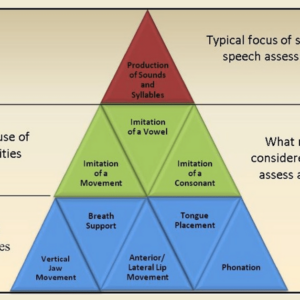Interactive Bilingual Dynamic Assessment Case Studies
$22.00

Course Type: Video – 1 1/2 hours
ASHA Course Code: Developmental Language Disorders – 3010
We know your caseloads are high and evaluations already take a loooooong time. It may seem painful to think about adding one more thing to the evaluation process. But we’re talking about 5-7-minute sessions that give you a huge bang for your buck in these assessment process.
In this course, we dive into dynamic assessment with bilingual students. We’ll show you how you can design and implement quick dynamic assessment lessons during your evaluation.
Additional Information
| Population | Early Childhood, School Age |
|---|---|
| Duration | 1.5 hours |
| Credit | .15 Continuing Education Units |
| Topics | Articulation/Phonology, Diversity, Equity, & Inclusion (DEI), Evaluations, Exp/Rec Language |
| Format | Video |
FINANCIAL: Ellen Kester, Ph.D., CCC-SLP is the owner of Bilinguistics. Bilinguistics receives royalty payments for online courses and products mentioned in this presentation.
NON-FINANCIAL DISCLOSURE: Ellen Kester does not have any non-financial relationships to disclose.
Dynamic assessment is often described in the research as a multi-day process that would be impractical for clinical or school-based speech-language pathologists to use in their practice. It doesn’t need to take multiple days to conduct a dynamic assessment. In fact, you can reap the benefits of a dynamic assessment in 15-20 minutes.
In this workshop, we will describe the steps involved in a dynamic assessment and show how you can use your testing data as your initial “test” component. We’ll show video examples of the process broken down into the five components of a Mediated Learning Experience, which is the teaching component of the dynamic assessment, and we’ll give you strategies for the re-test portion that allow you to examine your student’s responsiveness to intervention as well as their ability to apply what they learned to new settings or test items.
You’ll have the opportunity to create a dynamic assessment of your own, analyze responses from a dynamic assessment to inform your diagnostic decision and describe appropriate intervention goals based on results from a dynamic assessment.
Participants will:
List the components of a dynamic assessment and mediated learning experience.
Select dynamic assessment targets based on test protocol forms and language samples.
Make diagnostic decisions based on dynamic assessment results.
Design a treatment plan for a student from a bilingual environment using dynamic assessment results.
Time-Ordered Agenda:
05 minutes: Introduction to the topic
10 minutes: Reviewing referral information
10 minutes: Selecting Standardized Measures
10 minutes: Selecting Non-Standardized Measures
10 minutes: Analyzing Results and Designing Dynamic Assessment
10 minutes: Pulling the results into a concise report
05 minutes: Conclusion
Need CEUs?

 Share
Share
 Tweet
Tweet
 LinkedIn
LinkedIn
 Pin
Pin
 Email
Email





